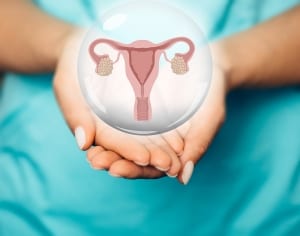 In Herzliya Medical Center, the leading private hospital of Israel, all types of operations on the pelvic organs are performed. The doctors of the clinic specialize in endoscopic procedures, including laparoscopic and vaginal hysterectomy (removal of the uterus). The advantages of minimally invasive (endoscopic and laparoscopic) surgery methods include the minimal risk of possible complications, short hospitalization and the recovery period after the surgery.
In Herzliya Medical Center, the leading private hospital of Israel, all types of operations on the pelvic organs are performed. The doctors of the clinic specialize in endoscopic procedures, including laparoscopic and vaginal hysterectomy (removal of the uterus). The advantages of minimally invasive (endoscopic and laparoscopic) surgery methods include the minimal risk of possible complications, short hospitalization and the recovery period after the surgery.
Types of Hysterectomy
Among the main types of the surgery aimed for the removal of the uterus for gynecological reasons at Herzliya Medical Center, the following shall be emphasized:
- Supravaginal removal (uterine amputation, subtotal hysterectomy). During this surgery, the uterus is removed with preservation of the cervix and vaginal arches. The procedure is carried out when the processes in the uterus are isolated
- Extirpation of the uterus (total hysterectomy). During this surgery, not only the body of the uterus but also the cervix is removed
- Removal of the uterus, ovaries and fallopian tubes (hysterosalpingo-oophorectomy). People suffering from the diseases accompanied by hormonal changes, as well as women after menopause are prescribed removal of uterine appendages in order to reduce the risk of oncology in the future. Unlike radical hysterectomy (surgery performed for oncologic indications), during this procedure, regional lymph nodes are not removed.
Before determining the type of hysterectomy, the surgeon of the Gynecology Department carefully explains the need to carry out a particular procedure, as well as the advantages and disadvantages of each of the above-mentioned methods.
Gynecological reasons for the removal of the uterus
The main gynecological reasons for the removal of the uterus include:
- Omission and prolapse of the uterus. The weakness of the ligaments and pelvic floor muscles can cause omission and prolapse of the uterus. This condition is accompanied by severe pain, the risk of infectious complications and impaired function of other pelvic organs, in particular, urination disorders
- Uterine fibroids. A benign tumor of the muscular layer of the uterus can reach large sizes. Complications of uterine fibroids (uterine bleeding, pain) often require surgical treatment
- Heavy vaginal bleeding. In addition to uterine fibroids, severe vaginal bleeding can be caused by the diseases of the mucous membrane and hormonal disorders. The risk of severe anemia before and after menopause is often the reason for the removal of the uterus
- Endometriosis. It is a condition in which endometrial cells are located outside the mucous layer of the uterus (most often in the region of the uterus and the pelvic cavity). Surgical treatment is considered for severe and resistant to drug treatment forms of endometriosis.
- Adenomyosis. Endometrial hyperplasia with characteristic structural changes and penetration into nearby anatomical structures (muscular layer of the uterus, cervix, pelvic organs). The disease can cause malignant degeneration and lead to serious complications, often requiring emergency surgical treatment
- Chronic abdominal pain syndrome. In addition to the above-mentioned diseases, the cause of chronic pelvic pain can be a long-lasting inflammatory process in the uterus, appendages and the pelvic cavity. When conservative therapy did not have the desired effect, the decision on surgical treatment is made jointly with the patient.
How is the laparoscopic hysterectomy performed?
At the Herzliya Medical Center in Israel, the laparoscopic hysterectomy is performed under general anesthesia, which eliminates unpleasant feelings during the procedure. During the operation, optical devices are inserted into the pelvic cavity, allowing full visual control over the surgical field. The digital image is enlarged several times and is displayed on monitors, allowing surgeons to carry out the necessary manipulations with the maximum precision. Depending on the diagnosis, the uterus or uterus and appendages are removed, followed by a thorough revision of the area of operation and hemostasis. Drainage is left in the pelvic cavity, providing an outflow of serous secretions in the first days after surgery. A catheter is inserted into the bladder to prevent urinary disorders. At the end of the procedure, stitches (brackets) are placed on small skin incisions. Immediately after the operation, the patient is placed in the intensive care unit for several hours. After the vital signs have stabilized, the patient is transferred to the gynecological department of the clinic. Before discharge, the drainage and catheter are removed. The discharge summary contains clear instructions for further treatment and care. After 7–10 days, skin braces can be removed on an outpatient basis.
 In Herzliya Medical Center, the leading private hospital of Israel, all types of operations on the pelvic organs are performed. The doctors of the clinic specialize in endoscopic procedures, including laparoscopic and vaginal hysterectomy (removal of the uterus). The advantages of minimally invasive (endoscopic and laparoscopic) surgery methods include the minimal risk of possible complications, short hospitalization and the recovery period after the surgery.
In Herzliya Medical Center, the leading private hospital of Israel, all types of operations on the pelvic organs are performed. The doctors of the clinic specialize in endoscopic procedures, including laparoscopic and vaginal hysterectomy (removal of the uterus). The advantages of minimally invasive (endoscopic and laparoscopic) surgery methods include the minimal risk of possible complications, short hospitalization and the recovery period after the surgery.